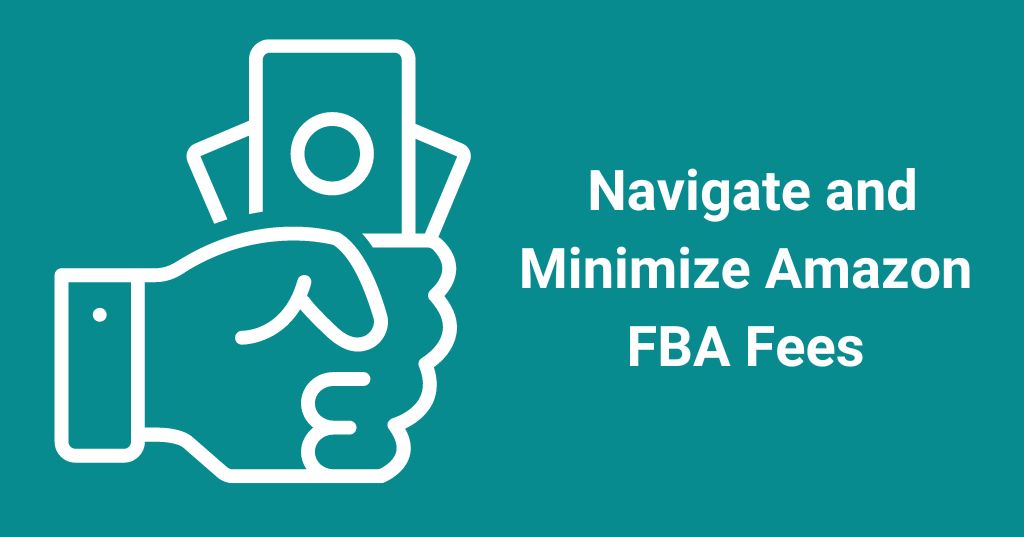Maximizing Your Profits: How to Navigate and Minimize Amazon FBA Fees
E-commerce merchants leveraging Fulfillment by Amazon (FBA) can attest that understanding the structure and impact of Amazon FBA fees is fundamental to business success. Proper management of these charges can significantly enhance your profit margin. This comprehensive guide offers a deep dive into strategies designed to effectively navigate and potentially curtail your FBA Amazon costs.
A Closer Look at Amazon FBA Fees
To efficiently manage FBA Amazon costs, you need a clear understanding of what these fees entail. Amazon FBA fees primarily comprise two parts: referral fees and FBA fees. Referral fees are a fraction of your product’s selling price, while FBA fees include the costs of storing your merchandise in Amazon’s warehouses (known as FBA Amazon storage fees) and the service charges for picking, packing, and shipping your orders
Inventory Management: A Key to Reducing FBA Amazon Storage Fees
One of the most practical ways to mitigate FBA Amazon storage fees is through strategic inventory management. Stockpiling excess inventory in Amazon’s warehouses over time can lead to significant costs. Therefore, implementing a lean inventory model, where you maintain just enough stock to meet projected sales, can help you avoid unnecessary storage fees.
Product Size and Weight: The Undervalued Aspect of FBA Costs
The physical attributes of your products – their size and weight – can have a substantial impact on your FBA Amazon cost. Amazon classifies items into two categories: standard-size and oversize. Standard-size items are less expensive to store and ship. Therefore, considering these aspects during the product design and development stage can save you a considerable amount of money in the long run.
The Role of Multi-Channel Fulfillment
Multi-Channel Fulfillment (MCF) is another factor to consider. If you also sell on platforms outside of Amazon, using Amazon’s MCF can streamline your operations. However, it’s essential to compare the fees for MCF with other third-party logistics providers to ensure you’re getting the best deal.
Monitoring and Recouping FBA Amazon Fees
Even Amazon, with its sophisticated systems, isn’t exempt from errors in billing FBA fees. It’s advisable to regularly monitor your Amazon FBA account and cross-verify the levied charges against your records. If you notice any discrepancies, you should promptly file a claim with Amazon. You might be eligible for a refund, which could contribute to reducing your overall FBA costs.
Year-Round Inventory Management
Seasonal variations in FBA storage fees are another critical aspect to consider. Amazon tends to increase storage fees during the holiday season (October to December), so managing your inventory levels throughout the year to account for this surge can result in considerable savings.
Fees Associated with Returns
Returns handling presents another opportunity for cost reduction. Amazon levies fees for processing returns, which can accumulate significantly over time. If your products have a high frequency of returns, it could be beneficial to evaluate if managing returns in-house could be a more economical alternative.
Leveraging Amazon's Small and Light Program
If your products are small and lightweight, you may be eligible for Amazon’s Small and Light Program, which offers reduced fulfillment costs for eligible items. This program can be an effective way to save on FBA Amazon fees, particularly if you sell items that meet the program’s criteria.
Conclusion
Efficiently navigating and reducing Amazon FBA fees necessitates a proactive approach, from strategic inventory management to vigilant fee monitoring. Understanding and effectively managing these costs are crucial steps towards bolstering your earnings and making your Amazon business venture more successful.
However, remember that seeking expert assistance from a specialized Amazon agency can be invaluable in optimizing your FBA costs.



